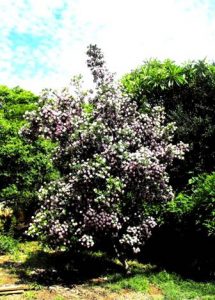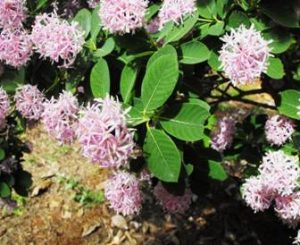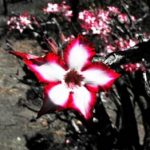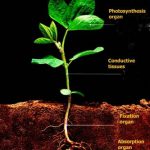TREE LIFE
July 2013
MASHONALAND CALENDAR
Sunday July 21st: Visit to Lanark Farm and Game Park: Dave Hasluck is again hosting us at this interesting venue. He will organise a braai fire, so bring your favourite meats, a chair and whatever else you need. We will meet at 0930 hours
Saturday July 27th: Visit to Bill Bedford’s game park, Mazowe Springs. Kindly arranged be Barbara Kockott. Meet at 14.30.
TREE OF THE MONTH
Dais cotinifolia
Family: Thymelaeceae. Common names: Pompom or pincushion tree; kannabast.
Dais cotinifolia is virtually the only tree worth mentioning in the Thymelaeceae family. Contrary to what might be deducted from the name, it bears no relation to garden thyme (Thymus vulgaris) which is found in the family Lamiaceae.

Dais cotinifolia
Dais cotinifolia is not very widespread in Zimbabwe, occuring on the margins of forests and rocky outcrops in the Eastern Districts and, strangely enough, sporadically in Matabeleland. The pompom tree is easily grown from seeds or truncheons. It is a pity that our streets are lined with exotics while there are so many indigenous species better adapted to this environment.
Dais cotinifolia is not a big tree but under ideal conditions can grow up to 10 m in height and generally has a beautifully rounded crown. The bark is smooth, brown with corky streaks and very stringy (as Thymelaeceae are supposed to be). In the past, the bark was used to make strong ropes.
The leaves are interesting – they are simple and opposite but the midrib and lateral veins are translucent, which makes them very noticeable.

Dais cotinifolia flowers
The flowers are beautiful, growing in spherical balls of about 4 cm in diameter. What appears to be the corolla is actually formed by the calyx, corolla and stamens all together, the anthers being borne toward the top of the tube.
The tiny black seeds are formed at the bottom of the little flowers and are ready to collect about a month or two after flowering when the green cup shaped bracts that hold the flowers become hard and brown, remaining on the tree for many months.
Even though somebody somewhere must use the pompom tree for medicinal purposes, I cannot find any specific references to it. Apart from the bark which is used to make ropes, the wood does not lend itself to any practical uses.
As an ornamental tree it is tops. The seeds germinate readily in sandy or potting soil after being soaked overnight in hot water before planting, with a little growth hormone added to the planting media.. As for most indigenous seeds they should not be planted too deep, the thickness of soil above the seed should be equal to the seed size. The plant is fast growing, growing around 80 cm a year.
– JP Felu
OUTING TO MAVHURADONHA WILDERNESS ECO-LODGE – THURSDAY 21 MARCH – SUNDAY 24 MARCH, 2013
Episode 2
Friday afternoon, 22nd March:
At 2pm on the second afternoon the Tree Society drove the 3 or so km from the Mavhuradonha campsite to the Sohwe falls. This writer’s party drove somewhat further, almost making it into the hot Zambezi valley before deciding we must have missed the turning. Peter, camp geologist, and Rachel his partner decided to cycle, and there occurred the first, and luckily the only, serious mishap of the trip. For rounding a corner at some speed Peter encountered a bus and swerving off into the long grass tore his shoulder quite badly. He was taken first to St Albert’s Mission hospital, but there being no doctor, he and Rachel reluctantly returned to Harare to seek medical attention. At the time of writing Peter is doing well but the shoulder will take time to heal and will be strapped for some months.
The Sohwe falls are a series of gentle cascades which drop an enormous distance into the Zambezi Valley. Their gentleness is deceptive: A plaque commemorates several people who have fallen over the falls and warns visitors to be careful. Some of the party went ahead to the falls to swim and enjoy the spectacular views. For Meg and Mark, this was a chance for careful perusal of the flora at the valley’s edge. Through the trees could be glimpsed a distant Sterculia quinqueloba, or large-leaved star chestnut, which hung over the valley cloaked in glorious autumnal colours. The woodland turned out to comprise the “escarpment brachystegia”, Brachystegia allenii, whose labels are blue green leaves which are paripinnate and “louvred” – angled vertically upwards towards the sun like louvre windows. Beneath these trees, Meg and Mark spotted a spiny Catunaregam bush, and nearby an Acacia senegal, which seemed to be of the variety rostrata. Bridelia cathartica also showed its unassuming presence in the woodland of the Valley’s edge and was almost missed. Known as the blue sweetberry, it is a shrub-like plant which grows at altitudes between 300 and 1200 metres above sea level. Another small plant sighted was Rhynchosia resinosa, described as scrambling by the Flora of Zimbabwe website. Proceeding down the path towards the river, Meg and Mark next spotted a Terminalia stenostachya, or Rosette cluster-leaf. These leaves, clustered in terminal rosettes, have very tight venation which causes their entire margins to appear crimped. Additionally there are extra-floral nectaries at the base of the petioles, if one looks carefully. A little further on was Olax obtusifolia, whose leaves are once again very “louvred”. More information is needed on this species.
A glance towards ground level next revealed another species of Striga – the genus to which the “witchweed” belongs, spotted earlier at the campsite. This time it was Striga gesnerioides, with a purple flower. Also near ground level was a species in the yellow-flowered Bidens genus, related to the black-jack (Bidens pilosa). Another fairly inconspicuous plant in the woodland was a species of Crotalaria yet to be identified. Near this, Mark saw a plant which, although listed at the Flora of Zimbabwe website, had not been spotted before: Desmodium ospriostreblum. Pavetta gardeniifolia was easier to spot and identify: its flowers have long delicate spikes and the leaves are dotted with dark bacterial nodules. To the right across the river, a Phoenix reclinata (wild date palm) was visible on the rocky bank. Nearby was another tree which favours river banks: Philenoptera violacea, the apple-leaf, which used to be called Lonchocarpus capassa. This tree tends to attract a spittle-bug, hence it can sometimes be known as a rain tree. Nearby, a Friesodielsia obovata grows, whose blue-green leaves are a label. Also present was Syzygium guineense, the woodland waterberry, and Ficus sur with its pronounced stipular scars. The smooth purple-brown bark of a Pouzolzia mixta was also pointed out, as was the pale yellow trunk of a large-leaved rock-fig, Ficus abutilifolia, close to the river bank. These latter trees favour rocky hillsides, where they sometimes split the rock with their powerful roots. Meg and Mark also noticed another tree-like resident in the woodland – this time it was Euphorbia griseola, subspecies mashonica, a plant with a very complex structure – multi-branched and with spines joined together to form ridges. These impressive succulents favour altitudes up to 1520 metres.
A velvet corkwood, Commiphora mollis, grows in the woodland too, as one approaches the Sohwe falls. This tree is deciduous and displays autumnal colours like the Sterculia quinqueloba, which by now had come into clear view across the ravine. Mark, Meg and our group now navigated our way down by the river, whose placid course gave little hint of the impending cascades. Growing on the river bank was a specimen of Nuxia oppositifolia and further on, just before the first of the Sohwe Falls, the interesting Artabotrys brachypetalus, the hook-berry, whose fruits and flowers are borne on stalk-like peduncles, which are shaped like shepherds’ crooks.
We had now reached the edge of the falls, and followed the others down into the ravine to the swimming pool, taking care not to go too near the edge, which advice was clearly painted on the slippery rock lip. This was a pleasant and interesting afternoon which was enjoyed by all.
– Richard Hartnack
Saturday 23rd March –Down to the Zambezi Valley
The morning’s session started with a descent down the Zambezi Escarpment, dropping down through a changing woodland containing more Combretum and Terminalia species typical of hotter, drier areas. We took the Hoya Rd northwards to the Seed Co. Research Station on the valley floor, stopping next to some Calotropis sp. (Giant Milkweed) and a species of the stalky shrub Sesbania, maybe sesban, that were growing on the disturbed ground. Mike Caulfield talked us through the process of testing new maize hybrid varieties that was on-going at the station. This site is used because growth rates are higher in the warmer temperatures of the Valley floor – two maize crops can be produced in a year and breeding trials take half the usual six years to complete. Because of the residues of heavy metals present in the soils that have been washed down from the Great Dyke however (the calcium : magnesium ratio is high), many additives are required to improve the growing conditions. Seed Co. must add calcium and zinc to the soils when planting – zinc oxide is added with the fertiliser, followed by a spray with gypsum; they then top dress with nitrogen and spray boron onto the maize leaves when the plant is flowering. Water that has been let out of dams up in Centenary 1.5 days earlier is pumped from the Musengezi River and because of the intermittent electricity supply, irrigation is often done at night. The silks of each maize flower are covered with a plastic bag and the flowers are self-pollinated to ensure inbreeding and no contamination from other varieties. The identical seeds that are produced are crossed with a known line from a single hybrid and the offspring are planted out in replicated growth trials to test their vigour and seed production. The seed yields are analysed to assess the best variety. In the region of 10,000 new hybrids are produced by the breeders every year and Seed Co skims off the best varieties to reproduce them for the market. If farmers keep the seed from the hybrids they have grown to produce a crop the next year they will lose 30% of the vigour in the first year and steadily more in following years. The growing conditions at the Research Station were ideal, but Seed Co. also produces hybrids that will do well in the small-scale farming areas where rainfall and fertiliser are limited and planting is usually late.
On leaving the Research Station we drove West along the Valley floor, stopping first to see two spectacular baobabs (Adansonia digitata) each of about 36m in circumference that took 9 people to reach around the stem. Later we stopped to look at a beautiful old Tamarindus indica, estimated to be about 100 years old, that was in flower. Meg told us that the late Lyn Mullin had written about this species, which is thought to have been introduced to India from Africa at the beginning of the slave trade, rather than the other way around. Along the road to the Musengezi River, where we stopped for a break and kept away from the crocs, we saw many Ziziphus mauritiana trees with their fruits slightly longer than wide and the large Acacia tortilis with its both curved and straight spines found on the same branch, sometimes even in the same pair. Continuing along the road from Muzarabani westwards towards Mahuwe we stopped to look at some interesting riverine species which caused much debate, including Cordyla africana, what we thought was Amblygonocarpus andongensis, Acacia galpinii and Cleistochlamys kirkii, with Senna obtusifolius and Occimum sp. growing profusely along the road.
Turning back to ensure we had time for a crispy cold beer under a large fig tree at the pub in Muzarabani, John Meikle was unfortunate enough to have a massive puncture. Luckily this did not mean we had to cut out the beer stop in Muzarabani, where the owner kindly provided us with chairs while we drank. We returned in time for a very welcome lunch at the Eco-Lodge, having noted ** different plant species along the way.
– Isla Grundy
Meg Coates Palgrave adds: Just to let everyone know the name of that big tree with bipinnate leaves we saw down in the Zambezi Valley. I thought it might be Amblygonocarpus andongensis, the Scotsmans-rattle. But when we got the specimen into the Herbarium in Harare and could find little resemblance to the Scotsmans-rattle we looked again – with our eyes this time – and discovered a gland on the petiole indicating an Albizia and indeed this proved to be Albizia zimmermannii, the woodland longpod false-thorn. This is quite exciting because in Zimbabwe it only occurs in the North of the country and is something we seldom see on our outings.
Report by a novice on the Tree Society outing to the Mavhuradonha Mountains
This is an overview of the outing – the guru stuff will be covered by those who know their trees! My first impression on arrival was – my goodness what a lot of trees there are here! There were some pretty large trees at the furthest part of the camp next to the stream whose origins was a spring further up the hill.
We stayed at the Mavhuradonha Wilderness Eco-Lodge, arriving on Thursday 21st March and departing on Sunday 24th March. There is a variety of accommodation at the site, from a one person basha to cottages that can sleep four. Some accommodation had built-in ablutions (with hot and cold water) whilst some did not. I stayed in what was considered to be a “Large Double” which was pretty small – it had two new single beds which were only 30cms apart! I didn’t look in to see what was in a “Small Double”.
This outing was organized by Bill Clarke who did a fantastic job of keeping the participants well informed before and during the event. Bill organised nametags for the participants and controlled the seating arrangements at the three meals per day that we all enjoyed. We played a form of “musical chairs” that gave us different neighbours – on the left and the right as well as across the table – at every meal. What a wonderful way of getting to know all the participants!
The first thing to do on arrival was to register at the “Central Tree”. I fully expected to see a large fig tree and was rather taken aback by seeing a large monkey-bread tree, Piliostigma thonningii, instead. With registration there was a tot of sherry, a name tag, etc. I like name tags when there are many unknown faces around! Under the tree was a long table that seated the 32 of us mostly in the shade. The Tree was the meeting place for localised tree walks as well as sundowners, meals, teas and virtually every else.
That evening, after sundowners, we were treated to the Tengenene Traditional Dance Group whose members were very energetic. They had travelled quite a long way to be with us and were some three hours or so late – it was meant to have been after lunch entertainment! After dinner we had the welcoming speech by Mark Hyde, a short talk by Meg Coates Palgrave and a talk by Peter Vanderspuy about the interesting aspects of the area – this area is at the top end of the Great Dyke which features the “Snake’s Head”.
Friday morning saw us with Meg or Mark identifying trees around camp. After lunch it was a trip to Sohwe Falls. Peter Vanderspuy and Rachel Nash decided to ride there as it was just a short way down the scenic Alpha Trail. Unfortunately Peter came off his bicycle and after a visit to the local medical facilities, he and Rachel left the group to get some proper medical attention in Harare – he had torn some ligaments which attach his collar bone. It was a steep, hard going drop to the falls, but what a spectacular place it is! Some took the plunge and had a swim whilst the rest just enjoyed the views and the tranquility of the place. This area was rich in tree species and the gurus had a field day!
Friday evening began with sundowners – drinks and many snacks passed round by those present – whoever got there first enjoyed the widest variety of snacks! After another superb dinner, we were split up into groups and participated in a fun quiz kindly organised by Richard Oultan. The winning team members were going to get a prize! Well, after much fanfare in presenting the two winning teams who had scored an equal number of points with their prize, every other competitor was also given the same a prize – a chocolate bar!
Saturday morning saw us going down the Alpha Trail to the valley. We were given a talk by Mike Caulfield on growing seed maize at the site. Of special interest was how the land was treated to minimize/overcome the many minerals present from the Great Dyke. Thereafter we took a drive along a dirt road towards Mahuwe, stopped at the Musengezi River and then stopped occasionally to look at interesting trees. This is where John Meikle got his puncture – a piece of quartz from the road had penetrated his rear wheel. He had to replace the wheel in Harare before he went back home to Penhalonga. On the return trip, the first lot of vehicles detoured for a very cold beer somewhere in Muzarabani, sadly the trailing vehicles didn’t know where the Beer Garden was and returned to camp.
Saturday afternoon saw most participants shooting zeds – zzzzzzzzzzzzz or just relaxing whilst some of us went to the quarry or proceeded from the quarry towards Eagles Crag. After sundowners and dinner, Mark gave the closing address and then Bill Clarke presented us with a variation of “Tail Twisting” carried out at Lions Clubs meetings – instead of people being fined, they were awarded little gifts for a variety of things e.g. biggest puncture – John Meikle!
Sunday morning after breakfast, it was time to pack up and head home. So came to an end a most interesting and successful weekend. During our stay Mark and Meg encouraged us to bring them bits of trees we couldn’t identify. My best find was a creeper with some pretty flowers which turned out to be a Buffalo Bean creeper!
A big thank you to Bill Clarke for organising and running such a memorable outing. Also, many thanks to Meg and Mark for their patience in dealing with us.
– Tony Alegria
VISIT TO HAKA GAME PARK SATURDAY 22 JUNE Quarter degree square 1731C3
The Tree Society welcomed some members for a midwinter afternoon walk in Haka Game Park, just outside Harare. For two hours we explored the woodland and the nearby open vlei. The park is in reasonably good condition, though being near the city it is disturbed to an extent and invaded by Lantana and Pine. The latter tree lines the road leading up to the park and its entrance.
The walk was led by Mark Hyde and began with a basic introduction to a few facts about trees – notably compound leaves and leaflets, which are arranged in pairs of “pinnae” (from the Latin word for feather) and the difference between Msasa and Mnondo trees. The latter, Julbernardia globiflora, have a slightly larger pair of leaflets as the central pair on the leaf stalk (or rachis), whereas the former, Brachystegia spiciformis, waves a larger terminal pair at the viewer, in a fashion which invites the label “Friendly tree”. A label for the Mnondo is that its pods are borne high and visible in the crown of the tree.
The area is what is known as Miombo woodland, widespread in Zimbabwe, Zambia and Mozambique, but petering out as one goes South beyond the Shangani area, 100km or so North of Bulawayo. Another term for this kind of biome is dry deciduous woodland and at 1546 metres, Haka is slightly higher in altitude than the centre of Harare itself.
Glancing around for something different in the Miombo canopy, Mark led us to a mukwa tree, Pterocarpus angolensis, whose crown, glowing invitingly with deciduous autumnal colour, bore striking winged pods with a hairy centre. These pods are indehiscent (they don’t burst open at all) and their construction earns them the humorous nickname of “hedgehog in a life raft”. A short distance away grows a specimen of Kalanchoe lanceolata, a succulent plant with an unusually hairy texture to the leaves, and near it a Vangueriopsis lanciflora, or false wild medlar, which has flowers with long corollas, or petal structures, and quite distinctive bark. A twiggy shrub, Artemisia afra, also invited a viewing and we decided its leaves might be good for medicinal purposes since they have a scent of cough drops.
Moving away from the cars we walked along the road, observing a large and magnificent msasa tree. Mark wondered whether there might be any epiphytic orchids hiding under it. There was also a small specimen of Uapaca kirkiana, the wild loquat or mahobohobo. The flowers of this tree are often (but not always) borne on separate plants – termed unisexual. It is more common for both sexes of flower to be borne on a single plant.
A little further on, Mark introduced us to the term “suffrutex”, meaning a plant with woody underground roots, which send up shoots seasonally, which then get burned off by dry-season bushfires. We saw three such plants on this afternoon’s walk – Eriosema englerianum, whose leaf stalks, or petioles, are very short, Grewia decemovulata, and patches of Parinari capensis, clinging to the ground near the open vlei. The latter though merely a ground-cover is related to the Mobola plum, Parinari curatellifolia, a specimen of which grows nearby. Across the road, beneath a substantial stand of Pinus roxburghii trees (which are surprisingly adept at spreading themselves amongst the Miombo woodland) Mark spotted an Ochna pulchra, and we saw another of these on the walk back to the cars. Ochna pulchra is also called the Mermaid tree – its bark is rough and scaly near the ground but smooth higher up.
We also saw the climbers Rhynchosia resinosa and Mondia whitei, a Cabbage tree, Cussonia spicata, and a Snake-bean, Swartzia madagascariensis, which has been incorrectly labelled – it is not found in Madagascar at all. The final plant we looked at was Dichrostachys cinerea, the Sickle-bush, with its curiously shaped pods. Examine the leaves with a magnifying lens and you see tiny glands at the junction of the second pair of pinnae on the compound leaf. These glands stand upright like spines. Mark also noticed the red branches of a Gymnosporia senegalensis, and the dark green shiny leaves of Coptosperma neurophyllum. More information is needed on this last mentioned species.
After viewing the fairly well- preserved grass wetland at the edge of the woodland, we headed back to the cars and had a bit of social time before departing from this game park – edified by the viewing of plants but not by the sighting of any game, and the cost to enter – $5 per person and $4 per vehicle – cannot be justified.
– Richard Hartnack



